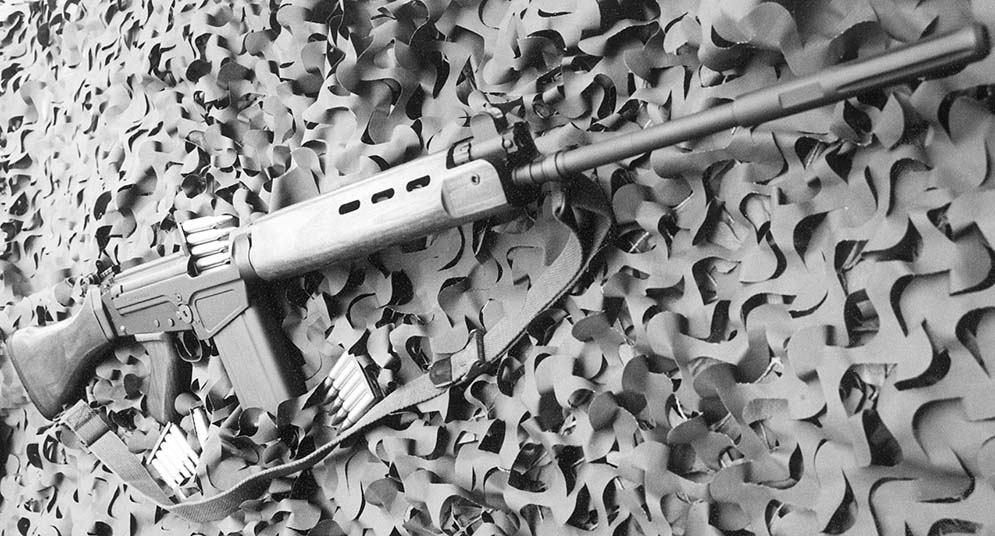By Charles Cutshaw
If there is a single “battle rifle” that defines the term, it is the Fusil Automatique Legere (Rifle, Automatic, Light), better known as the FN FAL. There are those who will argue that other “battle rifles,” such as the American M14, are superior, but that claim is belied by the fact that the FAL served as the primary infantry arm of over 90 nations. Only the ubiquitous AK in all its permutations ever achieved wider distribution in modern times, and those rifles were in many cases literally given away to Soviet client states, while FAL users had to purchase their arms.
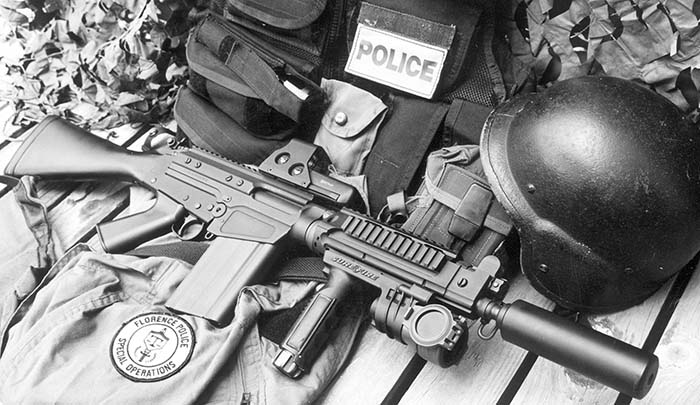
The FAL’s history can be traced to the end of World War II, when many armies began searching for new infantry rifles. The first FAL prototypes were in 7.92x33mm, the same intermediate class cartridge that was used in the German StGw 44 assault rifle. NATO, however, adopted the American T65 cartridge and the rest, as it is so often said, is history. The T65 became the 7.62x51mm NATO cartridge and Dieudonne Saive of FN Herstal redesigned the FAL to accommodate it. Saive’s genius produced a rifle that is arguably the greatest success story in the history of modern western small arms. Almost every member of NATO standardized the FAL as its infantry rifle. Later, the FAL was so widespread throughout the western world that it became known as “The free world’s right arm.” Although 5.56x45mm NATO caliber assault rifles have replaced the FAL in NATO service, it is still to be found in many of the world’s trouble spots. In addition, some armies are still seeking to equip at least part of their forces with new FALs, a further tribute to the excellence of the rifle’s basic design.
In recent years, thousands of surplus FAL rifles have been imported into the United States as “parts kits.” Manufacturers have assembled the rifles with enough American components to comply with BATF regulations and they consistently are sold at relatively inexpensive prices. Some firms began manufacturing their own upper receivers and began assembling rifles from imported parts, with questionable quality and accuracy, thus giving the FAL a poor reputation. This undeserved reputation continued until recent years, when one firm achieved primacy as the only true American manufacturer of FAL rifles – DS Arms, or DSA.
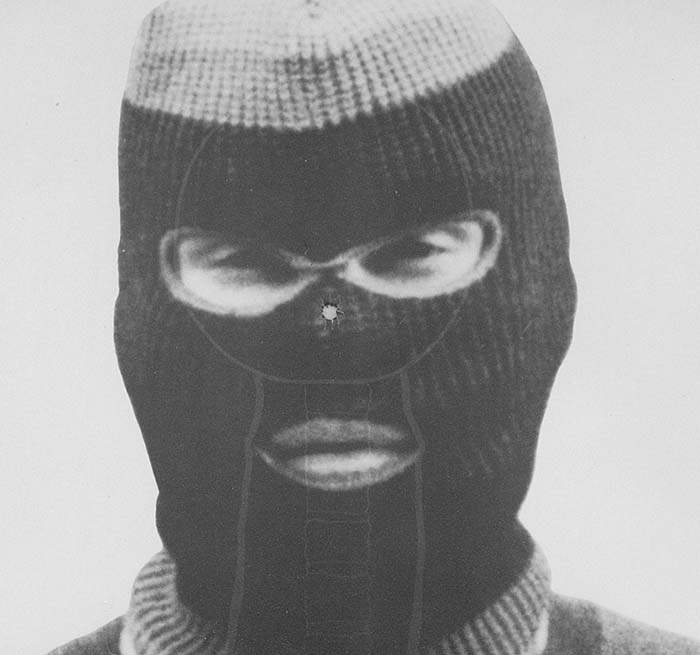
DSA began as an importer and assembler of FAL parts in the early 1990s, but subsequently purchased the tooling that Steyr used to manufacture the Sturmgewehr 58 (Assault Rifle, Type 58), although the StGw 58 was not a true assault rifle, being chambered in 7.62x51mm NATO. DSA also purchased FN Herstal’s original blueprints and is presently using them to manufacture rifles based on the FAL design. DSA’s rifles are the only ones being produced in the United States that make use of the original FN Herstal blueprints.
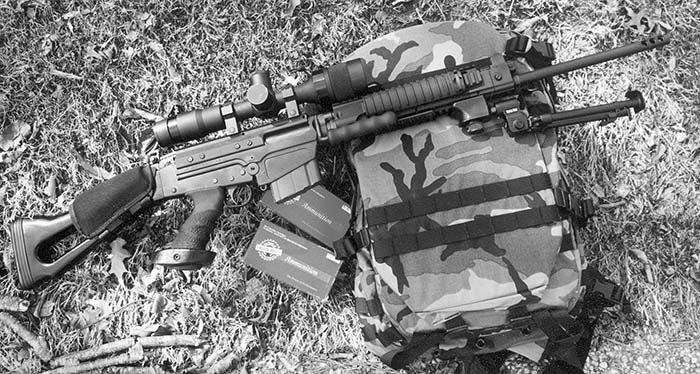
DSA’s upper receiver begins with a solid forged billet of 4140 steel, which is machined using CNC controlled milling machinery. The new receiver is then heat-treated. The upper receiver is the critical component of the FAL, as this is the component into which the bolt locks. The machining quality of the DSA upper receiver is outstanding. There are no machining marks and all the “correct” lightening cuts have been taken. The essentially unstressed lower receiver of DSA’s FAL rifles is made of 7075 T6 aircraft grade aluminum. This component is also machined from a solid forged billet. Some 85 per cent of the SA58’s components are made by DSA “in house.”
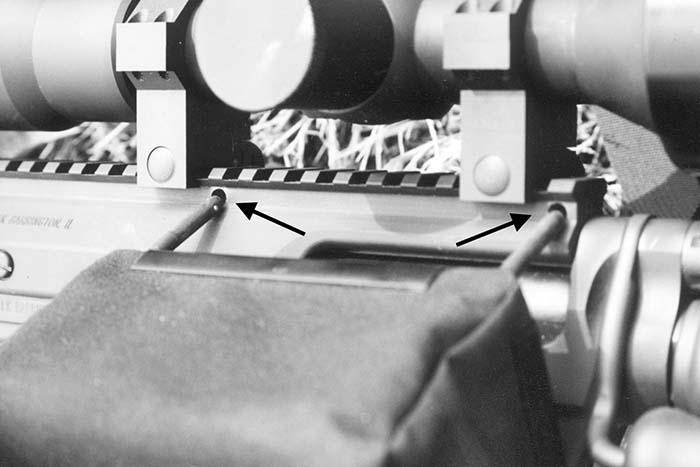
DSA’s rifles have been tested by H.P. White Laboratories for their ability to meet pressures that far exceed SAAMI standards. DSA FAL barrels are made by Badger, are double stress relieved and then cryogenically treated. Barrels are either 4140 carbon steel or 416 stainless steel. Most have integrally machined muzzle brakes. The right hand twist rate is one turn in 11 inches. All components are Parkerized or hard coat anodized.
DSA was not content, however, to merely produce reproduction FAL rifles. The company actually set out to bring the FAL into the 21st Century and offer “modular” rifles that were capable of accepting a multitude of accessories to meet various tactical situations, from close quarters battle (CQB) to long-range precision shooting. Through innovation and quality production, DSA has succeeded in manufacturing a semiautomatic rifle that is equal in accuracy to most production precision semiautomatic rifles.
One of DSA’s innovations is its SA 58™ “zero movement scope mount.” This mount replaces the FAL’s sheet steel dust cover with a massive hard-anodized 6061 T6 aluminum alloy cover that incorporates a MIL-STD-1913 rail mount that accommodates any standard Weaver-type mounting system. The SA 58™ Mount is positively locked to the rifle’s receiver by four steel locking plates, yet can easily be removed for cleaning and maintenance by loosening eight retaining screws. The SA 58™ Mount’s ejection port is “radiused” to ensure positive ejection and prevent case damage. DSA’s new FAL brass catcher can also be mounted on the SA 58™ mount. This accessory is capable of holding 80 spent cases and is ideal for those situations where leaving brass behind is not desirable, or when the shooter simply doesn’t feel like policing brass. The SA 58™ Mount will fit any metric FAL receiver.
Another major DSA innovation is the recently announced FAL Rail Interface handguard. The rail interface consists of four MIL-STD-1913 rails on top, bottom and each side of the handguard. When used in combination with the SA 58™ mount described above, the FAL becomes a true modular rifle capable of accepting accessories such as a vertical foregrip, laser pointers, high intensity white lights and other similar components designed for mounting on a rail adapter system. Like the SA 58™ DSA’s rail adapter system is made of hard coat anodized 6061 T6 aluminum and can be adapted to any metric pattern FAL.
Yet another DSA innovation is the company’s “X Series” buttstock. This stock is especially useful on a precision rifle such as the SA58™ Medium Contour that was tested as a part of this article. The hole in the stock not only looks good, but also allows the shooter to pull the stock firmly into his shoulder for greater stability when shooting from a rest. The injection molded stock is available either in black or green and has a rubber recoil pad.
We evaluated only a representative sampling of DSA’s rifles for this article – an SA 58™ Carbine with 16 inch barrel, a Medium Contour Rifle, a SA58™ “parts gun” assembled from Steyr and newly manufactured components, a “T48” replica prototype and an 11-inch barreled “entry gun” that is available only to military and law enforcement.
All rifles had the standard DSA features described above, plus several options to tailor them for their specific uses. Each came with a comprehensive operator’s manual and three magazines – one 20-round, one 10-round and a five-round. The SA 58™ Carbine, Medium Contour, and the Entry Gun had both the “Zero Movement” top cover and the rail adapter system. The carbines came with a 16 and 11 inch barrels. A 13-inch barreled carbine is also available. The two short-barreled carbines are available only to police or military customers. The 16-inch carbine also came with a Hogue grip adapter, a small detail, but one that made a decided difference in the little rifle’s handling. Trigger pull was 7 pounds, with slight creep, but no overtravel on all rifles and carbines, except the Medium Contour Rifle, which will be described below. We tested the carbines with Sure Fire’s new M900 Millenium Vertical Foregrip System, EOTech’s new Model 550 HoloSight, and an AN/PEQ-5 laser pointer. With all accessories installed, our carbines tipped the scales at a hefty 10 and 12 lbs. “as tested weight” for the 11-inch and 16-inch versions, respectively.
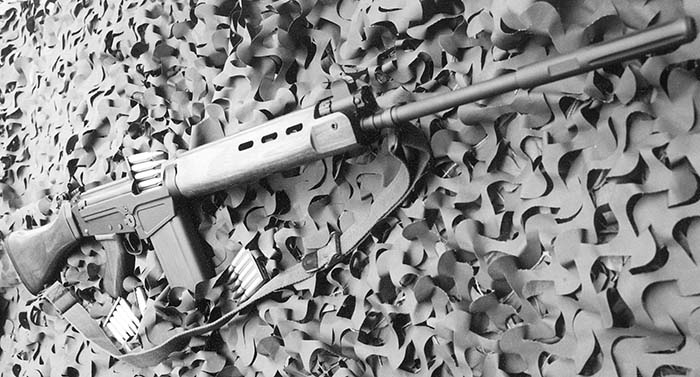
The M900 foregrip system is the latest in Laser Products’ accessories for law enforcement and military use and consists of a high intensity white light and two low intensity LED “navigation” lights. The latter are controlled by a momentary “push” switch and emit just enough light for an operator to see his way in darkness while minimizing the possibility of compromising the presence of either himself or his team. The high intensity white light is controlled either by momentary “press” panels on the side of the vertical foregrip or by a constant “on/off” switch at the rear of the light head. This light is so intense that it causes flash blindness when viewed directly, especially in darkness. This is one reason that so many law enforcement and military organizations use Laser Products’ high intensity tactical lights for night operations. The M900’s bezel lens is of Pyrex and has a movable infrared cover so that the unit can be used with night vision goggles. The M900 will mount to any MIL-STD-1913 rail system via a quick-connect ARMS lever attachment system that positively locks the unit in place.
EO Tech’s HoloSight (Holographic Diffraction Sight – HDS) is arguably the best electro-optic sight available today for use at distances from close quarters battle (CQB) ranges of 25 meters out to approximately 300 meters. (SAR has an in-depth review of this system coming up in another issue) This is because the HDS uses a small laser to project a true reticle with a 1 MOA dot surrounded by a ring type reticle that provides both quick target acquisition at CQB distances and a degree of precision out to 300 meters. The HDS allows the use of existing open sights and works even if the hardened glass reticle is broken. The Model 550 HDS also has no less than 10 night vision settings, providing much greater flexibility than its competitors, which have only two night vision settings and do not have a true reticle. We had two versions of HDS for evaluation – one in the older “N” battery configuration and another in the new “AA” battery setup. Both have identical capabilities, but the “AA” version is slightly longer.
The AN/PEQ-5 laser pointer is a standard military item that provides yet another CQB option for the user. The laser pointer is not ideal for most situations, but can be used for target designation, sighting and other purposes, essentially adding yet another level of flexibility to the shooting system.
DSA’s Medium Contour FAL rifle came with a Versa-Pod bipod, “X Series” stock, along with the same options as the carbine. The trigger of the Medium Contour broke at a consistent 41/2 pounds with no creep, but with some overtravel. The latter could have been removed using the built-in trigger stop. The rifle also was equipped with an adjustable pistol grip, which proved to be very comfortable and an aid to accurate shooting. We fitted a US Optics 10x fixed focus telescopic sight to the Medium Contour. This brought the “as tested” weight of our rifle to approximately 15 pounds.
With our rifles and carbines fitted out, we headed to the range, where we tested the guns for accuracy using Black Hills Match and limited penetration ammunition. Since the carbines were set up as CQB weapons, we fired at 50 yards using the HDS. At 50 yards, we obtained consistent three-round shot groups of 1/2-inch from both carbines. Shooting Black Hills’ recently announced limited penetration ammunition gave a group of just under one inch. Despite their accuracy, the SA58 carbines are LOUD! Even with match ammunition, there is a HUGE fireball and the muzzle blast is palpable, especially on the 11-inch carbine. This is a function of shooting ammunition designed to be fired from a 20-inch or longer barrel, and is inherent in any carbine because there is a large amount of burning powder projected beyond the short barrel. There was no provision for mounting a suppressor on the 16-inch carbine, but for military or law enforcement use, suppressors are mandatory. We believe that any organization that opts for the SA58(tm) or any other carbine, regardless of caliber, should use suppressors to attenuate the blast and flash, because these effects will be significantly magnified when the weapons are used inside a building.
The reader will note that we treat DSA’s carbines as potential entry and CQB weapons. Before dismissing this idea as absurd, one should consider several factors. Many special operations and law enforcement agencies are now transitioning from pistol caliber submachine guns to short (141/2 inch and shorter) barreled AR-15 type carbines because pistol caliber bullets will not penetrate protective vests, now worn by many “bad guys.” These short-barreled .223/5.56mm carbines have serious shortcomings, however, in terms of terminal ballistics because the velocities of bullets fired from them are generally too low to cause military ball bullets, either M193 or M855, to fragment at other than point blank range. The velocities of bullets fired from these carbines are also too low to cause many expanding bullets to open, as has been demonstrated in recent gelatin testing. The net result is that while .223 bullets will penetrate protective vests, the terminal ballistics in the flesh that lies beyond approximates those of a .22 Magnum. This being the fact, potential carbine users might well consider alternatives, such as the more potent 7.62x51mm cartridge, which has adequate terminal ballistics, even after penetrating a Level IIIa vest. While there are legitimate concerns about overpenetration with 7.62x51mm ball ammunition and other standard cartridges, there are alternative types of ammunition that solve this problem. For example, Black Hills limited penetration ammunition gives excellent terminal results and does not penetrate more than about 10.5 inches in ballistic gelatin. Hornady’s .308 Tactical Application Police (TAP) ammunition is another excellent choice, especially in its 110- and 155-grain loadings, which penetrate only to about 9.75 and 14 inches, respectively. Another military and law enforcement option is frangible ammunition, which will penetrate Level IIIa vests, but fragments upon contact with hard surfaces, including bones, and does not ricochet or splashback. In fact, 7.62x51mm carbines such as DSA’s would make superior CQB weapons when properly equipped and loaded with appropriate ammunition. While DSA’s CQB carbines are available in select fire versions, we cannot recommend this configuration because the 7.62x51mm cartridge is extremely difficult to control in lightweight carbines such as these when fired in the full automatic mode. We should further note that DSA’s carbines are presently the only ones offering true modular versatility.
The DSA Medium Contour rifle performed as expected. Using Black Hills 175-grain match ammunition, we fired two virtually identical five round groups of 0.875-inch at 100 yards. The rifle shot slightly larger groups of approximately 1.2 inches using Black Hills 168-grain match ammo. The Medium Contour thus qualifies as a designated marksman or countersniper rifle. Note the “terrorist target” that we shot from a cold bore at 100 yards. Our point of aim was approximately 1/2 inch above the bullet’s point of impact.
We have few criticisms of DSA’s rifles. Oddly, the Medium Contour rifle came with a carrying handle, while the carbines did not. The handle on the Medium Contour was useless with a telescope in place, but a handle on the carbines might have some utility. Also, there was no provision for a sling on the Medium Contour rifle. A front sling swivel was present, but there was none on the rear. The latter is the only significant shortcoming we could identify on an otherwise excellent rifle. And finally, while not a criticism, the reader will note that the many accessories added a substantial amount of weight to these rifles and carbines that weigh nearly nine pounds empty, devoid of any accessories. (There’s no such thing as a free lunch!)
The T48 that we evaluated is a close replica of the rifle that lost the 1950s competition to the T44 that later became the M14. DSA’s T48 replica is a very high quality product with finely finished walnut furniture that should prove of interest to the military collector who cannot afford to own an original T48, an extremely rare firearm. As a matter of interest, DSA intended to use the T48 as the basis for a “California legal” FAL that would be loaded through the top of the dust cover and had a fixed ten round magazine. Unfortunately, while the prototype rifle met the provisions of the state law, California’s “gun hostile” bureaucracy decided that the rifle would not be approved because if its appearance! So much for equal treatment under the law in the “Granola State.” (So called because it is filled mostly with fruits, flakes and nuts, especially in government.) The T48 shot about as expected, achieving 1.75-inch average groups using Black Hills 168-grain match ammunition.
Our “parts gun” was made up using surplus Steyr (Austrian) and US manufactured components. In appearance, the rifle is virtually identical to the original Austrian StG58, complete with folding bipod. Naturally, the rifle is semiautomatic only. The muzzle device is similar in appearance to the original StG 58’s muzzle brake/flash suppressor, but in today’s milieu of inane federal gun laws, it functions only as a muzzle brake. Of course, there is no bayonet lug, so that the American people are protected from “drive by” bayonet charges.
While these rifles represent quite a variety, they are only a small part of DSA’s product line. In fact, there is a DSA FAL to suit the desires of virtually every shooter who desires a reliable, rugged rifle in a military or quasi-military configuration. A glance at the sidebar will give the reader an appreciation of the array of DSA’s product line.
DSA’s FAL rifles represent the best of the breed since FN ceased production. In fact, the DSA guns are in many ways superior to the originals since they incorporate improved metallurgy and CNC machining of the forged components. The rifles that we evaluated for this article proved to be accurate, reliable and of high quality manufacture. The Medium Contour Rifle would be ideally suited as a counter sniper rifle or medium range hunting rifle, while the Carbines would serve as excellent CQB weapons or “brush guns” for hunting. DSA is giving new life to the venerable FAL by innovation and quality standards that are equaled by no other manufacturer. For example, DSA is planning the introduction of FAL rifles in other calibers, such as .243 and .260. For the coming year, production will be limited to ten carbines and ten rifles in each of these calibers. DSA is also researching methods to even further enhance the accuracy and overall performance of their rifles. DSA’s FALs are competitively priced in comparison to similar “battle rifles,” such as the AR-10B(tm), SR-25(tm) and M1A(tm), but the AR-10B(tm) and M1A(tm) rifles use M14 magazines, which cost approximately $50 each as of this writing, while the SR-25(tm) uses proprietary magazines that are even more expensive. 20-round FAL magazines are currently less than $10 each. Moreover, DSA presently offers a greater variety of rifles than any other manufacturer. And finally, there is DSA’s unique full lifetime warranty for parts and labor. Any of these rifles can be counted upon to deliver a lifetime of reliable performance, but we believe that when all things are considered, DSA’s FALs are probably the best buy among “battle rifles” available today.
Contact Information:
DSA, Inc
PO Box 370
Barrington, IL 60011
Tel: (847) 277-7258
Fax: (847) 277-7259
www.dsarms.com
Laser Products
18300 Mount Baldy Circle
Fountain Valley, CA 92708
Tel: (714) 545-9444
Fax: (714) 545-9060
www.surefire.com
EOTech (HDS Sight)
3600 Green Court, Suite 400
Ann Arbor, MI 48105
Tel: (734) 741-8868
Fax: (734) 741-8221
www.eotech-inc.com
Black Hills Ammunition
PO Box 3090
Rapid City, SD 57709-3090
Tel: (605) 348-5150
Fax: (605) 348-9827
www.black-hills.com
Kengs Firearms Specialty, Inc
(Versa-Pod & US Tactical Mounts)
875 Wharton Dr.
PO Box 44405
Atlanta, GA 30336-1405
Tel: (404) 691-7611
Fax: (404) 505-8445
| This article first appeared in Small Arms Review V5N2 (November 2001) |



